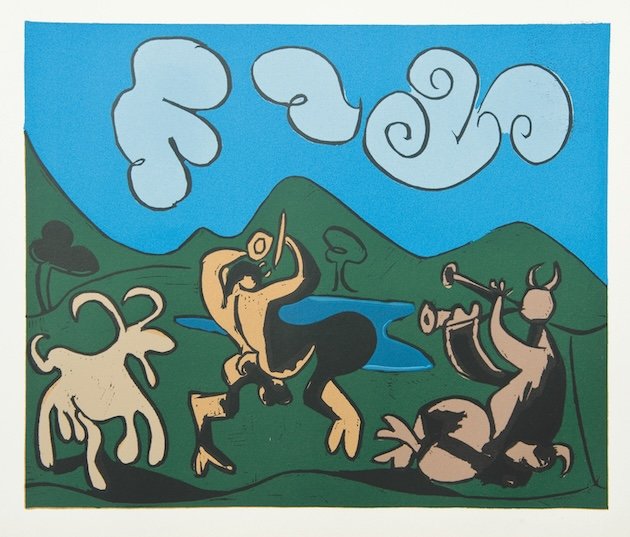The Remarkable world of Original Prints
The term original print can be confusing as print is widely used to describe reproductions as well as originals. A good example of a reproduction is a Giclée, which is made by photographing an original painting for example, and producing the subsequent image using quality inkjet printers. They're reproductions as the original exists elsewhere.
With original prints, the original artwork is the print itself. The image may have been created in a variety of ways, by being etched into a plate, or drawn onto a lithographic stone, or engraved out of a block of wood for example. The finished work is only created by inking up and taking an impression from this plate, stone or block. The work does not exist in any other form. So when you're buying an original print, you are buying an original piece of art made by the artist, or by an artisan printmaker, closely supervised by the artist. Original prints are designed to be created in multiples. There is no single original piece as each print in the edition is the original.
David Hockney “A Black Cat Leaping”
Etching, Aquatint, 1969
Suite: Six Fairy Tales from the Brothers Grimm
Unsigned, Edition of 400, Paper size: 27 × 23.5cm, £2750 Framed
From Book Edition B for the Illustrations for Six Fairy Tales from the Brother's Grimm suite. Printed by the Print Shop, Amsterdam and published by Petersburg Press, London
Take Pablo Picasso for example, one of the most important artists of the 20th Century. He was a painter, sculptor, theatre designer but also a prolific printmaker. During a career spanning seventy-five years, he produced an estimated 2400 prints in varying editions, alongside his paintings, sculptures and ceramics. It's an assumption that original works by Picasso are unattainable by most, however this is only the case with his paintings, which represent only a part of his output. Picasso produced his first etching in 1904, he then went on to turn the medium inside out, inventing new techniques and confounding ideas of what was possible. Over the coming decades he moved onto lithography and linocut, working furiously until he had exhausted its potential. Picasso was so prolific it's possible to acquire work by his hand for less than £1000. Many are unsigned, making them much more affordable, but at Paragon Modern Masters all original prints are authenticated and accompanied by a certificate or a justification page.
Pablo Picasso “Two Satyrs and Goat”
Linocut, 1962
Suite: Linogravures
Unsigned, Paper size: 32.5 × 27cm, £1150 Framed
Between 1958 and 1961 Picasso made many linocuts, a process that he found hugely stimulating.First issued in signed editions of 50 by Galerie Louise Leiris, many of which now sell at between £8,000 and £80,000 each. Picasso invented the ‘reduction’ method, progressively cutting the same linoblock for each new colour, making it impossible to take any further prints from the original block.In 1962, in collaboration with Picasso and Galerie Louise Leiris, new linoleum plates were made at 42% of the original size, and it was from these that the prints on offer here were made.
Whether the affordability of works like this will remain priced as they currently are is open to question: the demand for the artist's work has sent prices surging over the past decade. As more pieces end up in collections and museums, the pool of available work gets smaller and smaller. There has never been a better time to invest in original works of this nature, it is a rare opportunity to own a piece of history from one of the true giants of art. Experts are always on hand at the Paragon Gallery to talk you through the fascinating world of printmaking.
Henri Matisse “Nu Bleu XI”
Lithograph, 1954
From the suite The Last Works
Signed in Plate, Paper size: 26.5 × 35.5cm, £1450 Framed
Between 1950 and 1954 Matisse created some highly innovative, brightly coloured gouache paper cut-outs. Severe arthritis had made it difficult for him to paint. In 1953 it was decided to reinterpret these works as lithographs. Matisse personally directed and supervised the first 'pulls' during 1954, in collaboration with the renowned lithographers Mourlot Frères of Paris. These prints are original lithographs from the 1954 edition after Matisse’s cutouts.



